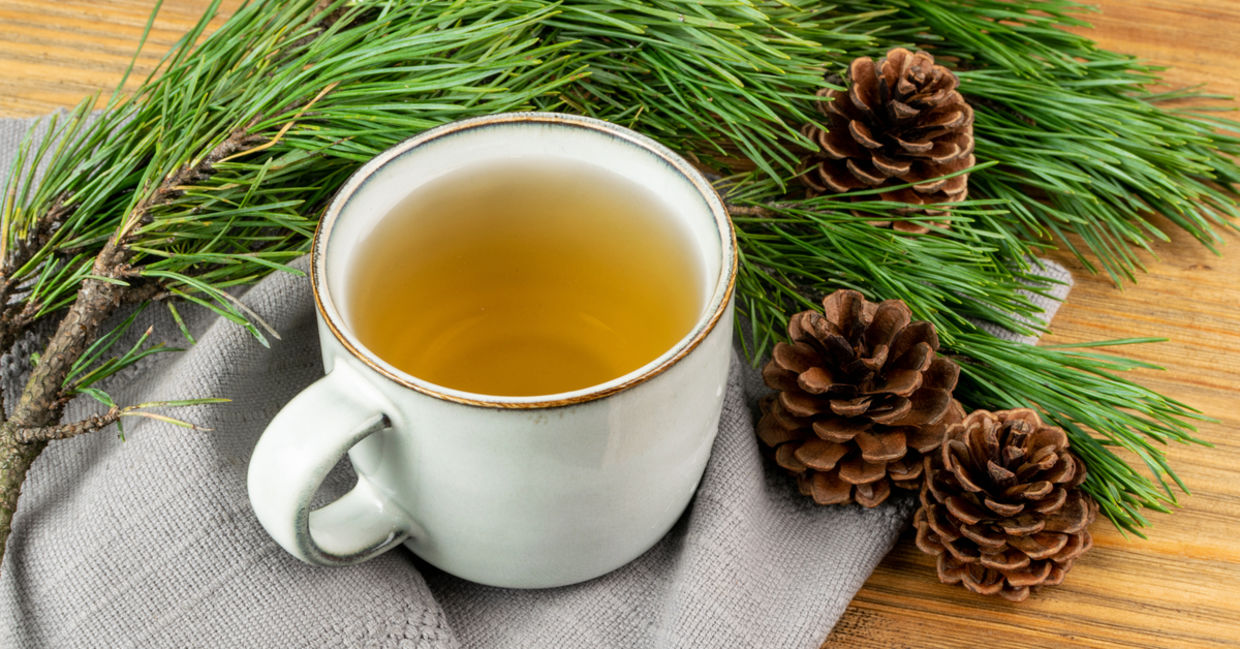Native to the eastern North American region, Pine Needle Tea is made from the Eastern White Pine and has been introduced globally and become more popular in the last few years. As an ingredient that’s not usually common for making tea, we believe that pine needle tea carries its charm in how it’s prepared for drinking and its added benefits.
Brewing Pine Needle Tea is generally an easy affair but there are a few key points that need to be understood. In order to get the best results, unfortunately, you can't just drop and place the needles into hot water, steep for a few minutes and be good to go.
Pine Needles are hardy plants that have natural protection against a number of elements, with the main one we're concerned with being water! To get around this, it's best to crush the leaves by any means necessary. A few household items that might be available to you include:
Mortar and Pestle
Not really the most common item in the kitchen (although it once was), but a good mortar and pestle will definitely do the job well if you do happen to have one on hand. You don't have to grind down the pine needles to dust, but the idea is to just break the outer coatings of the pine needles as much as possible to allow for better water diffusion once they’re in your cup.
Blender
Tea in blender
Same as above, but is a little less controlled. It also takes the fun out of the manual grinding of using a mortar and pestle but maybe that's just me. Be careful not to over blend, with just a few seconds is all that's needed in most cases.
Coffee Machine with Grinding function
Coffee machine grinder
I have been told that this can be one of the best methods with Pine Needle tea, not so much due to the grinding function the machine contains but more so the pressure that is applied to the tea during the process. This extraction method can be more powerful than regular steeping but isn't 100% necessary.
Why do we need to grind Pine Needle Tea?
As briefly mentioned above, Pine Needles have evolved with a natural protective coating on the outer layers to avoid too much absorption of water. Although our Pine Needle is cut, it's still best to disrupt the coating even more by crushing or grinding, much like coffee beans. Although water can diffuse into coffee beans, the strength of the coffee flavour and its effects are a lot less than when you’ve grounded them first.
What should it taste like if done correctly?
There's a little misconception on what pine needles should taste like, with ideas built up from Essential Oils, artificial pine smells from window cleaners, and candles. Almost all other Pine smells are artificial or enhanced in some way. Real Pine Needle when taken as tea doesn’t have a very strong taste, but if crushed and infused long enough - the contents of the Pine Needle are infused with the water to be beneficial. The water is slightly yellow, much like white tea.
How long and how often to drink it?
Infusion should be around 10 minutes but if you want it as strong as possible, steeping overnight is also fine, starting the steep with hot water. Currently, there's no general consensus on the temperature. To my knowledge, there aren't any compounds contained within that are affected by boiling temps but many will play it safe and do 80 degrees celsius instead.
Pine needle tea has quite a simple history and a less thorough history than other teas. There are many rumours about its medicinal properties and health benefits but what is supported is that the pine needle does have some great vitamins and minerals that can improve your health. What’s most appreciated though, is its Vitamin C concentration that’s great for the immune system which may help the onset of some minor illnesses like your typical cold and flu.
As always, if you’re not feeling well, we first recommend consulting with a professional, but if you’re after a new tea to try that can have a therapeutic effect in its preparation, look no further than high-quality pine needle tea online in Australia, which you can purchase from Tea Life.
If you’re interested in exploring other varieties of herbal tea, be sure to check out the complete range of herbal tea options at Tea Life


Share:
Fennel Tea - Ancient, Traditional, and Modern Benefits
5 Best Teas For The Summertime
6 comments
Its flared my system up I have m.e cfs
https://www.google.com/
Google
Understood great
Thank you so much explaining how to steep pine needle tea. I have been doing it wrong so now l know how to do it right.
Thank you for the brewing hints, very useful.